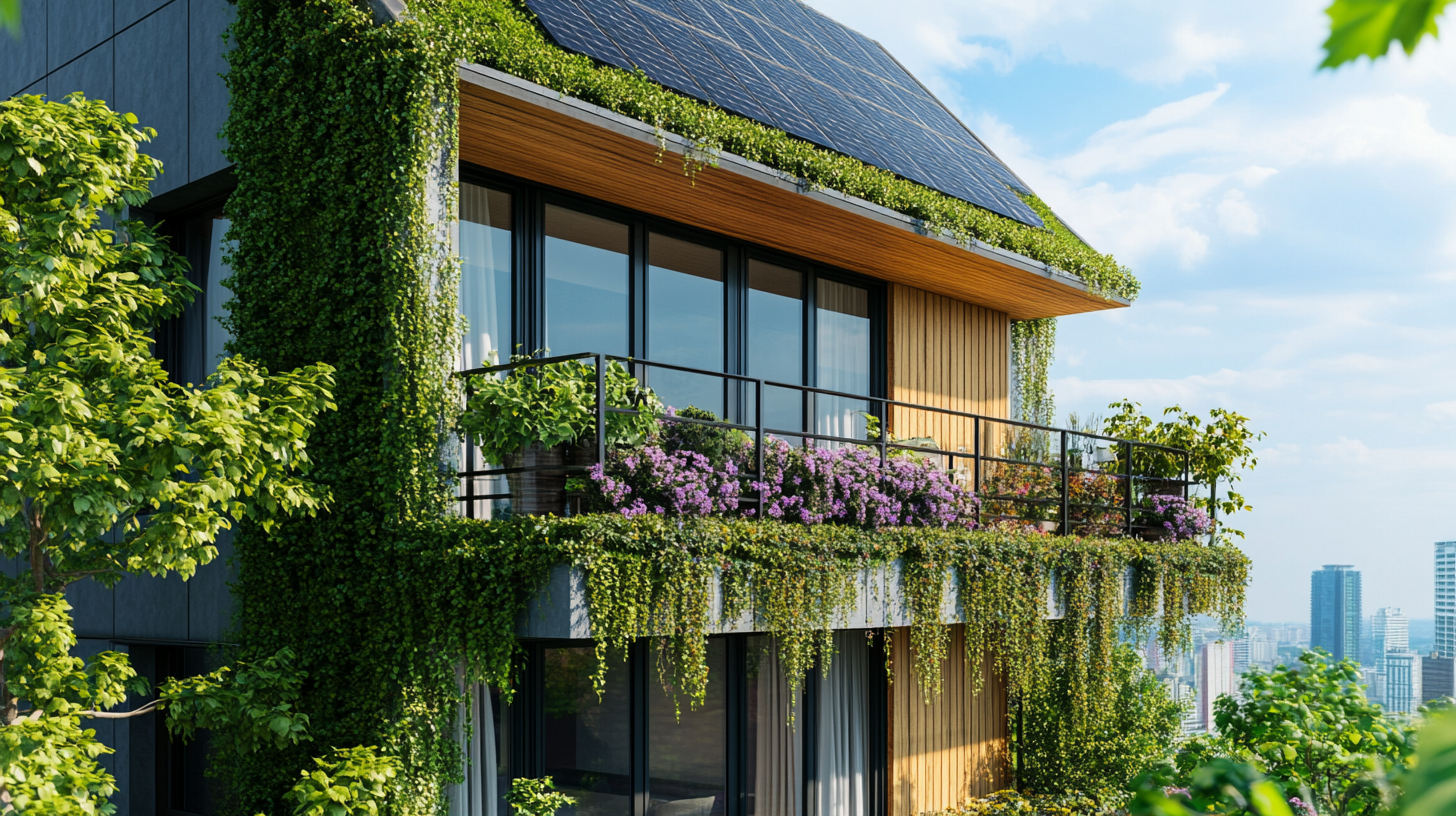Natural beauty for your favorite space
Advantages of Choosing Eco Building Products for Sustainable Construction Solutions
In an era where environmental concerns are at the forefront of global discussions, choosing the right materials for construction has become more critical than ever. Eco Building Products have emerged as a pivotal solution for achieving sustainable construction practices. These innovative materials not only reduce the ecological footprint of building projects but also enhance energy efficiency, improve indoor air quality, and promote overall well-being for occupants. As the construction industry grapples with the challenges posed by climate change and resource depletion, the shift towards eco-friendly alternatives represents a significant step towards building a greener future.
The advantages of using Eco Building Products extend beyond environmental benefits; they also offer economic advantages that can be pivotal for builders and homeowners alike. By integrating these sustainable materials into construction projects, stakeholders can enjoy long-term savings through reduced energy costs and maintenance. Moreover, as consumer demand rises for sustainable housing, properties built with eco-friendly materials often have higher market value and appeal. This blog will explore the numerous benefits of opting for Eco Building Products, highlighting their role in promoting sustainable construction solutions and paving the way towards a more responsible built environment.

Benefits of Eco-Friendly Materials in Reducing Environmental Impact
Eco-friendly materials play a crucial role in reducing environmental impact during construction. A key benefit is that they minimize the carbon footprint associated with building processes. Traditional construction materials often involve high energy consumption for extraction and processing, which contributes significantly to greenhouse gas emissions. In contrast, eco building products, such as recycled steel, bamboo, and reclaimed wood, require less energy to produce and often sequester carbon dioxide, promoting a more sustainable lifecycle. Additionally, using eco-friendly materials can enhance the overall health of the environment and the occupants of the building. Products that are free from harmful chemicals or volatile organic compounds (VOCs) not only reduce pollutants but also create healthier indoor environments. This allows for better air quality and comfort for residents, which has become increasingly important in today's health-conscious society. By choosing materials that are both sustainable and safe, builders can ensure that their projects contribute positively to the ecosystem rather than detract from it. Moreover, eco-friendly materials often boast greater durability and lower maintenance needs over time, offering long-term cost savings and efficiency. Utilizing materials designed for sustainability typically results in fewer repairs and replacements, which enhances their overall value. This combination of reduced environmental impact and practical benefits positions eco-friendly materials as not just a trend, but a viable solution for future construction practices.

Cost-Effectiveness of Sustainable Building Products Over Time
In recent years, the demand for eco building products has surged, driven by a growing awareness of sustainability and environmental impact. One of the key aspects that often gets overlooked in discussions about sustainable construction is the long-term cost-effectiveness of these materials. According to a report by the National Institute of Building Sciences, sustainable buildings can save owners around 20-30% on energy costs compared to traditional buildings. This significant savings over time can offset the initial higher investment often associated with eco-friendly materials.
Moreover, the initial costs of sustainable building products are decreasing as technology advances and production scales up. For instance, a study published by McGraw Hill Construction in 2022 found that nearly 50% of contractors reported that the cost of green building products has become more competitive over the last five years. As more manufacturers enter the market and product offerings expand, the affordability of eco-friendly options is likely to improve, further encouraging their adoption.
Furthermore, sustainable building products often come with enhanced durability and lower maintenance costs. The U.S. Green Building Council states that buildings that utilize green materials experience longer lifespans and require less frequent repairs. This durability translates into financial savings over the lifecycle of the building, making eco-friendly options not only ethically appealing but also financially sensible in the long run.
Overall, while the initial investment in eco building products might be higher, the long-term savings from energy efficiency, reduced maintenance, and increasing competitiveness in pricing make them a cost-effective choice for sustainable construction.

Enhancing Indoor Air Quality with Green Construction Solutions
Choosing eco-friendly building products is not just a trend; it’s a crucial step towards creating healthier indoor environments. One primary advantage of using sustainable materials is their positive impact on indoor air quality. Traditional construction materials often emit volatile organic compounds (VOCs) and other toxins, which can lead to respiratory issues and other health problems. By opting for green construction solutions, homeowners and builders can significantly reduce the presence of these harmful substances, fostering a safer living space.
Moreover, eco building products are designed to minimize the impact on the environment while improving air quality. For instance, materials such as low-VOC paints and finishes, natural insulation, and sustainably sourced wood not only lessen harmful emissions but also contribute to a more breathable and comfortable indoor atmosphere. These products often incorporate features that help regulate humidity and prevent mold growth, further enhancing the overall quality of indoor air.
Investing in green construction solutions also encourages a holistic approach to building design. By integrating energy-efficient systems and natural ventilation methods, spaces become more resilient to climate changes and better suited for prolonged use. Ultimately, the choice of eco-friendly materials leads to environments that promote well-being, supporting both physical health and mental clarity, which is essential in today’s fast-paced world.

The Role of Eco Building Products in Energy Efficiency
The integration of eco building products plays a crucial role in enhancing energy efficiency within sustainable construction solutions. As climate concerns escalate, the demand for high-performance buildings has surged, leading to a focus on materials that reduce environmental impact while maximizing energy savings. By utilizing products such as recycled steel, insulating concrete forms, and plant-based polyurethane, builders can create structures that not only conserve resources but also significantly lower energy consumption.
Furthermore, the trend towards smart renovations highlights how eco-friendly materials can facilitate the green transition in Europe. These renovations prioritize efficient energy use and resource management, reflecting a broader industry commitment to sustainability. With approximately 96% of home builders actively improving the energy performance of their projects, it's clear that eco building products are not just an aesthetic choice but a necessity for achieving long-term climate resilience.
The burgeoning green building materials market, projected to grow by USD 363 billion from 2024-2028, underscores the increasing recognition of energy-efficient solutions. As new technologies and materials emerge to meet this rising demand, eco building products will continue to lead the way in shaping a more sustainable future, proving that responsible construction can contribute to a greener planet while enhancing the quality of life for its inhabitants.
Compliance with Environmental Regulations Through Sustainable Choices
In today's construction landscape, compliance with environmental regulations has become essential, not just for meeting legal standards but for fostering sustainable practices within the industry. By choosing eco-friendly building products, construction companies can align their projects with current environmental mandates while simultaneously addressing consumer demand for sustainable solutions.
The increasing focus on sustainable choices is a response to the evolving regulatory framework aimed at reducing pollution and conserving natural resources. Construction companies that invest in eco building products not only adhere to environmental regulations but also enhance their marketability. As consumers become more environmentally conscious, businesses that demonstrate compliance through sustainable practices can strengthen their brand image, creating a competitive edge.
Furthermore, making the switch to eco-friendly materials can lead to long-term cost savings. While the initial investment may be higher, sustainable building products often result in reduced energy costs and decreased waste management expenses over time. This shift not only supports environmental goals but incentivizes businesses to adopt holistic sustainability strategies that resonate with today's eco-aware marketplace. By prioritizing compliance through sustainable choices, companies can pave the way for a greener future in construction while meeting the needs of both regulators and consumers.

